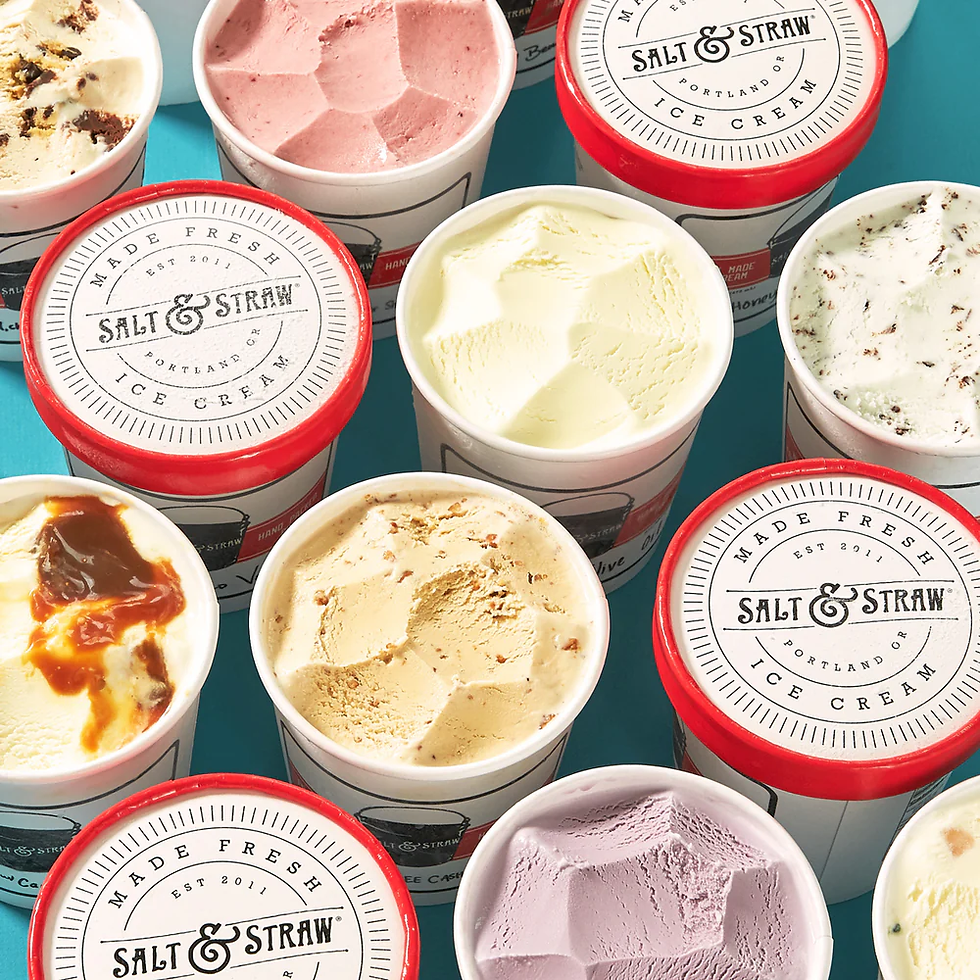A Strategic Snapshot of Salt & Straw
- Veritas Advisory | Small Business Consulting
- Aug 26, 2025
- 3 min read
Salt & Straw, a name that is almost synonymous with Portland ice cream. Founded in 2011 by cousins Kim and Tyler Malek, the company first started off as a food truck in the Alberta Arts District. However, within months they were a huge success and were able to upgrade to an actual shop. Since their beginning, Salt & Straw has expanded to over 40 locations across the nation, spanning from coast to coast with locations from LA to Miami.
This week, Veritas Advisory had the opportunity to conduct an independent strategic analysis of the company and its operations.

Note:
This review was conducted independently through Veritas Advisory, a student-led consulting project focused on improving local small business strategy through data analysis, observation, and creative thinking. This analysis was conducted using only publicly available information, social media insights, and menu pricing. The report shown below is a suggestion based on the findings of the analysis.
Pricing Structure:
Thanks to Salt & Straw's enormous market presence, the company has been able to position itself in the premium tier for ice cream pricing. A standard pint of any flavor usually costs around $15, with certain bundles such as the Best Sellers Pack or the Pints of the Month going all the way up to $75 and more. Other offerings like party packs and pup cups are also in the premium price range.
Compared to other ice cream brands available at your local grocery store, Salt & Straw's premium pricing strategy allows them to position themselves as "the best ice cream there is."
Customer Feedback:
Salt & Straw has managed to curate an overwhelmingly positive perception of their ice cream, with signature flavors like Sea Salt and Caramel Ribbons being extremely popular locally in Portland.
There are some areas for improvement, however. Salt & Straw has been consistently experimenting with their flavors, but some of the most common criticism is regarding their dairy-free options, which many feel are overrated and not really worth the price.
Social Media:
Salt & Straw has a commanding presence on social media, with over 487,000 followers on Instagram alone. However, despite their posting frequency being high, the engagement on their posts is quite inconsistent.
One way to solve this problem is through simple social media campaigns. These could include a monthly/weekly showcase of different flavors available, content from behind the scenes, etc.
Strategic Observations
Strengths
Highly creative, rotating flavors drive repeat visits and media buzz.
Strong brand identity rooted in Portland’s artisan culture.
Expansion strategy that blends national reach with local storytelling.
Sustainability initiatives that enhance credibility and social impact.
Weaknesses / Risks
High price points limit accessibility for everyday indulgence.
Some customers find the dietary options overrated for the price.
Opportunities
Expand community-focused collaborations (local farms, nonprofits).
Grow subscription or membership models (monthly bundles, exclusives).
Build off the co-founder’s published cookbook to extend storytelling into homes.
Threats
Rising competition from Portland-based artisan ice cream shops.
Risk of “novelty fatigue” if innovation overtakes reliability.
Challenges of scaling artisanal quality across 40+ locations.
Final Takeaway
Salt & Straw has evolved from a single food cart into one of Portland’s most recognized culinary exports, building a reputation around bold creativity, community connection, and sustainable practices. The brand’s challenge now is to keep balancing innovation with authenticity as it scales nationally. If it continues to root its expansion in storytelling, sustainability, and the nostalgia that won Portland’s heart, Salt & Straw will remain a defining name in the craft ice cream world.




Comments